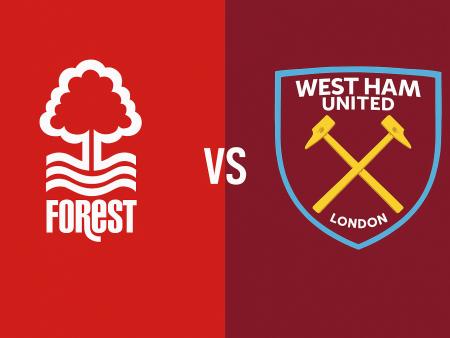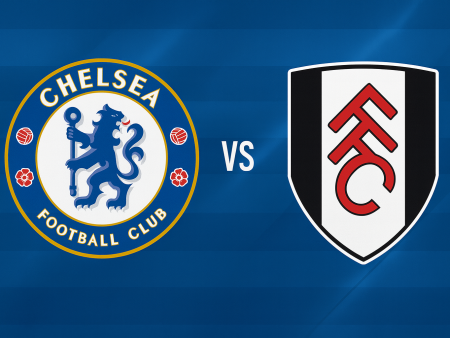Chelsea Under Mauricio Pochettino: Assessing Tactics, Performance, and Areas for Growth
Chelsea’s highly anticipated new era under Mauricio Pochettino brought renewed hope to Stamford Bridge, fueled by the arrival of dynamic young talents. Yet, as the 2023-24 Premier League season progressed, the Blues struggled to ignite, finding themselves anchored mid-table. Despite exciting signings and a fresh approach, questions persist over the club’s direction and capacity to challenge for European competition. Here’s an in-depth look at Chelsea’s tactical framework, squad evolution, and the critical adjustments required for improvement.
Formation and Tactical Approach: The 4-2-3-1 Blueprint
Mauricio Pochettino’s Chelsea typically lines up in a 4-2-3-1 formation, though there are frequent shifts toward a 4-1-4-1 shape and even a 3-2-4-1 setup during attacking phases. This fluidity is designed to maximize the strengths of a versatile midfield trio-Conor Gallagher, Enzo Fernández, and Moisés Caicedo.
- **Gallagher**: Primarily functions as the advanced presser, pushing up to disrupt opponents and create turnovers high up the pitch.
- **Enzo Fernández**: Saw a more progressive role, advancing forward and providing incisive passing and shooting from distance.
- **Moisés Caicedo**: Has adapted to a more defensive, anchoring position, granting his midfield partners freedom to join attacks.
In attacking sequences, full-backs like Reece James and Ben Chilwell or Malo Gusto alternate their advancing runs, which often creates numerical superiority out wide and transitions the team into a formation resembling 3-2-4-1. Such versatility is intended to support transitions, maintain width, and facilitate creative interplay, particularly between Cole Palmer and Raheem Sterling.
However, the system’s early implementation witnessed players operating out of their preferred roles: Gallagher deputized as a holding midfielder before Caicedo’s arrival, and Chilwell found himself in a hybrid wing-back/winger position. Over time, Pochettino established more consistent roles, especially leveraging Gallagher’s press and the attacking chemistry between the former Manchester City duo, Palmer and Sterling.
Defensive Structure and Personnel Updates
At the back, Chelsea’s summer signing Robert Sánchez has brought reliability and composure in goal. His willingness to play short from the back and a decent long-ball completion rate has bolstered buildup play. In central defense, the experienced Thiago Silva continues to be an on-pitch leader, though at 39, succession planning is underway:
- **Axel Disasi and Benoît Badiashile**, both formerly of AS Monaco, have impressed and appear ready to assume central roles.
- **Levi Colwill**: Highly rated for his ceiling but deployed predominantly on the left, partly due to tactical considerations and questions around Marc Cucurella’s fit on the left flank.
Full-back creativity, especially on the right with Reece James and Malo Gusto, has become a key attacking outlet, often linking with Sterling or Palmer to create overloads and chances.
Attacking Patterns and Ongoing Challenges
Despite individual brilliance, Chelsea's attack remains inconsistent. Key contributors:
- **Cole Palmer and Raheem Sterling**: Have collectively contributed 13 goals and assists, thriving on interplay and movement.
- **Nicolas Jackson**: Offers hard running, effective link-up play, and penalty-box poaching instincts, though he is still working toward consistency in front of goal.
The midfield also provides a goal threat, with Enzo Fernández ranking second in shots per 90 behind Jackson. Gallagher, though previously prolific at Crystal Palace, has adopted a more creative, assisting role so far this season.
There is, however, a recurrent issue in buildup play. Chelsea often looks disconnected during possession phases, particularly against organized high presses. The supposed hallmarks of modern buildup-close connections, short passes, and rotational movement-are not always visible. Instead, distances between players can be excessive, and automated patterns, such as third-man runs or rotations, are less developed than at sides like Manchester City or Brighton.
The tendency to bypass midfield under pressure and resort to long balls exposes a lack of trust in central options or a need for clearer tactical rehearsals to handle such scenarios. Reducing these gaps and encouraging more synchronized movement off the ball would likely help unlock passing options and maintain ball progression under duress.
Evolution in the Final Third
Further forward, Chelsea often morphs their attacking structure based on opposition defenses, toggling between 3-2-4-1 and 3-1-5-1 to create overloads and exploit space. Wingers invert or retain width depending on combinations-such as Palmer and Sterling narrowing to overload central areas.
Sterling’s dribbling and ability to break lines, coupled with Jackson’s physicality holding up play, give Chelsea more options for both direct play and buildup. Improving the chemistry between the midfield trio and forwards will be vital, as will timing wide overloads to create high-quality shooting opportunities for late-arriving midfielders or strikers.
Defensive Organization: Strengths and Vulnerabilities
Defensively, Chelsea has displayed promise, although vulnerabilities remain. Last season, the team conceded an average of 1.2 goals per game, resulting in a -9 goal difference. This campaign, attacking improvements have been offset by an increased concession rate of 1.6 goals per 90 minutes.
Chelsea defends in a compact 4-4-2 when out of possession, relying on Gallagher’s relentless engine to initiate the press. Pressing intensity is measured rather than all-out, prioritizing moments when the opposition is vulnerable. The team excels at cutting off central passing lanes, forcing play wide, and setting traps-especially with the robust midfield pairing of Enzo and Caicedo shielding a physical defense.
However, many conceded goals arise from transitional moments rather than sustained opposition buildup. Mistakes while in possession often leave defensive midfielders isolated, and center-backs-Silva, Disasi, Badiashile-tend to drop off rather than step up aggressively, leading to exploitable gaps.
Optimizing the defensive shape, specifically by assigning Enzo to a deeper role in rest-defense phases, could help Chelsea manage transitions better, much like the Jorginho-Kovacic partnership during Thomas Tuchel’s tenure. This would allow for more rapid recovery and coverage when attacks break down.
Path Forward: Unlocking Potential and Returning to Europe
Chelsea’s squad boasts ample talent and several new signings have integrated well, yet the club continues to endure frustrating results. Sustained improvement will depend on:
- Closing gaps and increasing automated movement in buildup phases to better resist pressing sides.
- Developing sharper chemistry in the attacking trident and utilizing wide play and late runs more effectively.
- Fine-tuning the rest-defense structure to avoid transitions catching the team out of position.
- Establishing a consistent starting XI where players operate within their optimal roles to foster confidence and predictability.
The foundation for progress exists within Pochettino’s tactical scheme and the individual quality present throughout the squad. By focusing on cohesion, connectivity, and tactical discipline, Chelsea can transform promising undercurrents into tangible results-and reignite their pursuit of European qualification.
With fine-tuning and greater consistency, the prospect of climbing back up the Premier League table remains within reach for the Blues this season.













